Reinhild Roden
Institut für Hörtechnik und Audiologie, Jade Hochschule, Oldenburg, Germany
Using a one-dimensional finite-element approximation of Webster's horn equation to estimate individual ear canal acoustic transfer from input impedances
Apr 14, 2023Abstract:In many applications, knowledge of the sound pressure transfer to the eardrum is important. The transfer is highly influenced by the shape of the ear canal and its acoustic properties, such as the acoustic impedance at the eardrum. Invasive procedures to measure the sound pressure at the eardrum are usually elaborate or costly. In this work, we propose a numerical method to estimate the transfer impedance at the eardrum given only input impedance measurements at the ear canal entrance by using one-dimensional first-order finite elements and Nelder-Mead optimization algorithm. Estimations on the area function of the ear canal and the acoustic impedance at the eardrum are achieved. Results are validated through numerical simulations on ten different ear canal geometries and three different acoustic impedances at the eardrum using synthetically generated data from three-dimensional finite element simulations.
Optimization of a Fixed Virtual Sensing Feedback ANC Controller for In-Ear Headphones with Multiple Loudspeakers
Oct 07, 2021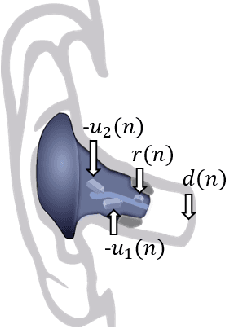
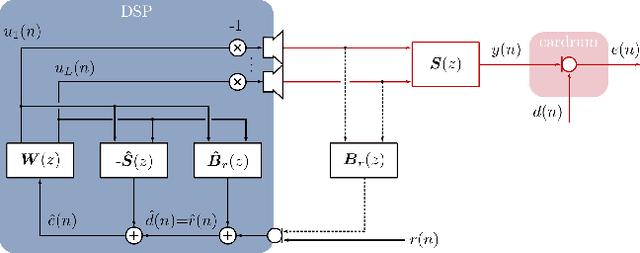
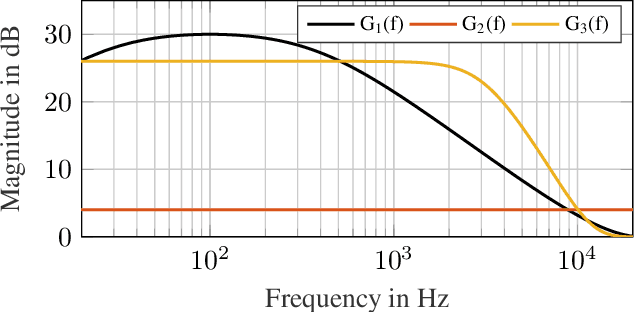
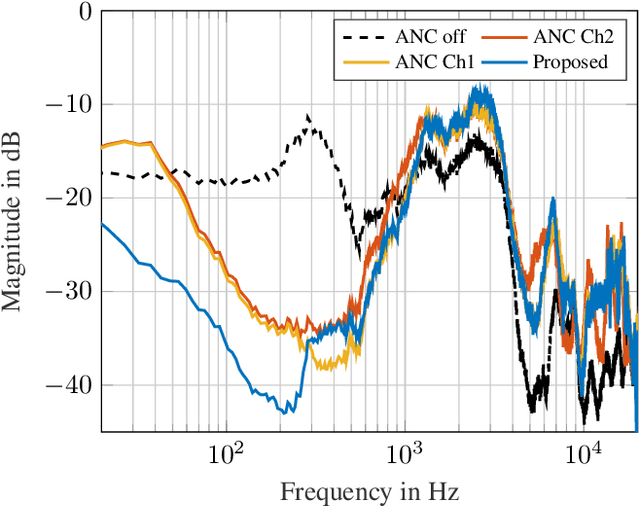
Abstract:In this paper we consider an in-ear headphone equipped with an inner microphone and multiple loudspeakers and we propose an optimization procedure with a convex objective function to derive a fixed multi-loudspeaker ANC controller aiming at minimizing the sound pressure at the ear drum. Based on the virtual microphone arrangement (VMA) technique and measured acoustic paths between the loudspeakers and the ear drum, the FIR filters of the ANC controller are jointly optimized to minimize the power spectral density at the ear drum, subject to design and stability constraints. For an in-ear headphone with two loudspeakers, the proposed multi-loudspeaker VMA controller is compared to two single-loudspeaker VMA controllers. Simulation results with diffuse noise show that the multi-loudspeaker VMA controller effectively improves the attenuation by up to about 10 dB for frequencies below 300 Hz when compared to both single-loudspeaker VMA controllers.
Sound Pressure Minimization at the Ear Drum for In-ear ANC Headphones using a Fixed Feedforward Remote Microphone Technique
May 14, 2021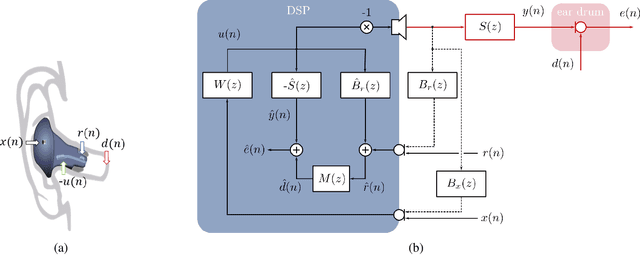
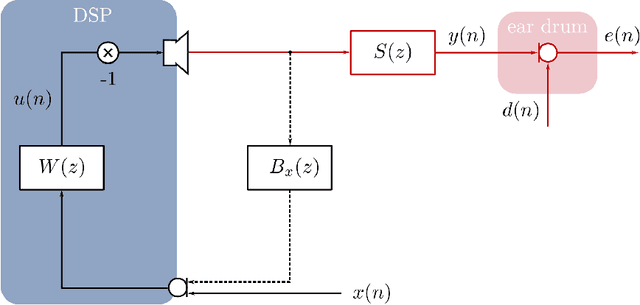
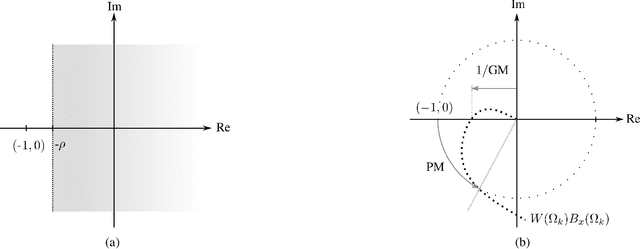
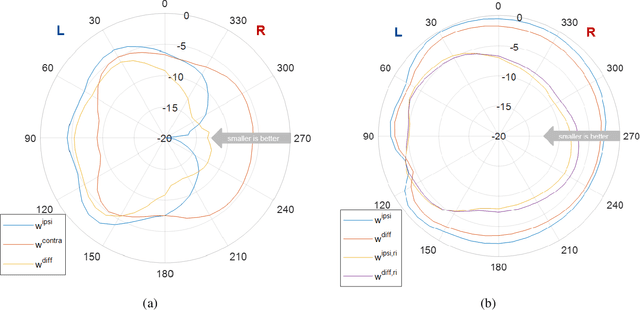
Abstract:In this paper we consider an in-ear headphone equipped with an external microphone and aim to minimize the sound pressure at the ear drum by means of a fixed feedforward ANC controller. Based on measured acoustic paths to predict the sound pressure generated by external sources and the headphone at the ear drum, the FIR filter coefficients of the ANC controller are optimized for different sound fields. Due to the acoustic feedback path between the loudspeaker and the microphone, a stability constraint based on the Nyquist stability criterion is introduced. Performance degradations due to reinsertions of the headphone and intra-subject variations are addressed by simultaneously optimizing the controller for several measurement repetitions of the acoustic paths. Simulations show that the controller optimized for an ipsilateral excitation produces an attenuation of at least -10 dB that extends approximately to +45{\deg} and -65{\deg} from the ipsilateral DoA. The controller optimized for a diffuse-field excitation achieves an attenuation of at least -10 dB over a wider range of DoAs on the ipsilateral side, namely +90{\deg} to -90{\deg}. Optimizing the controller for several measurement repetitions is shown to be effective against performance degradations due to reinsertions and intra-subject variations.
 Add to Chrome
Add to Chrome Add to Firefox
Add to Firefox Add to Edge
Add to Edge